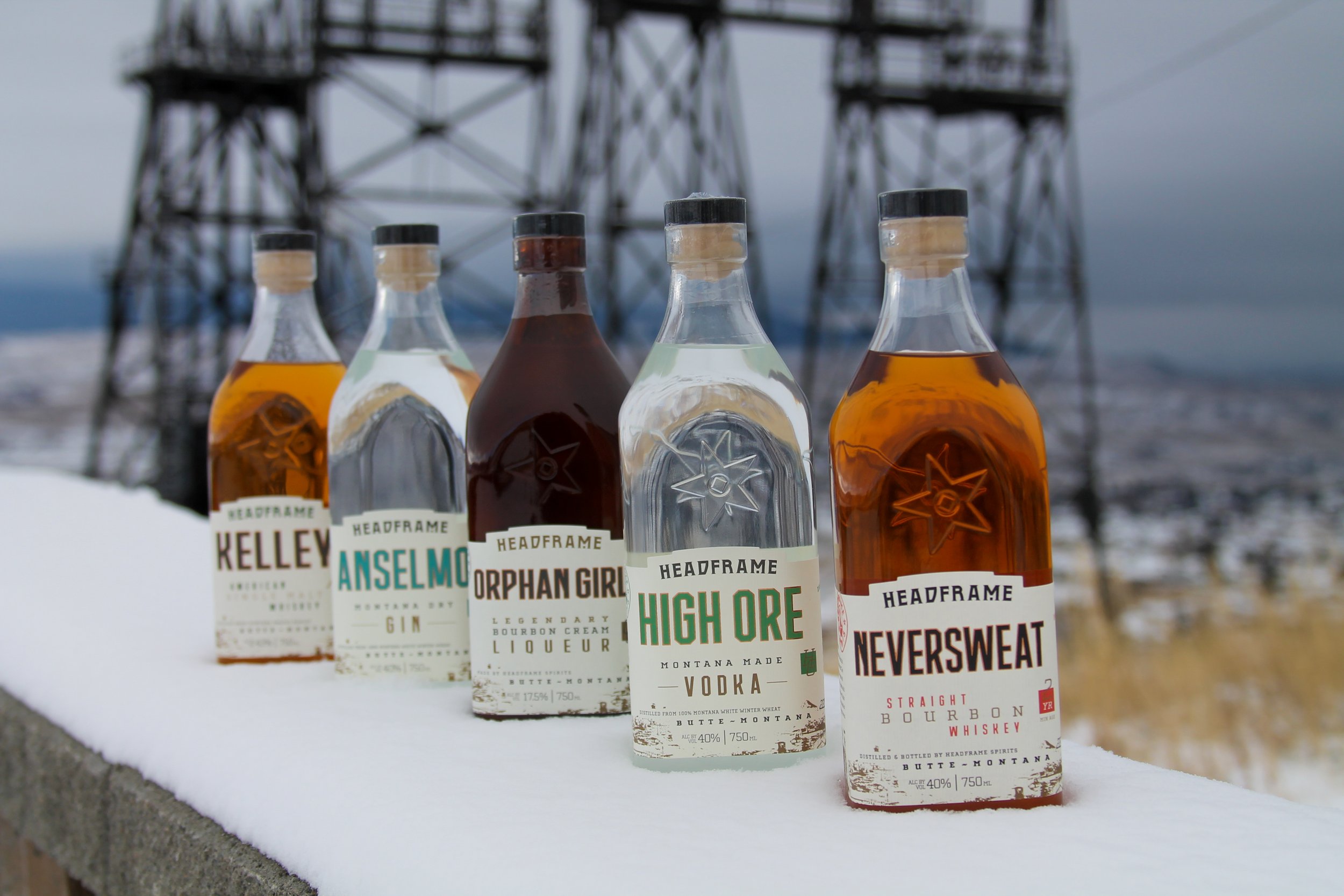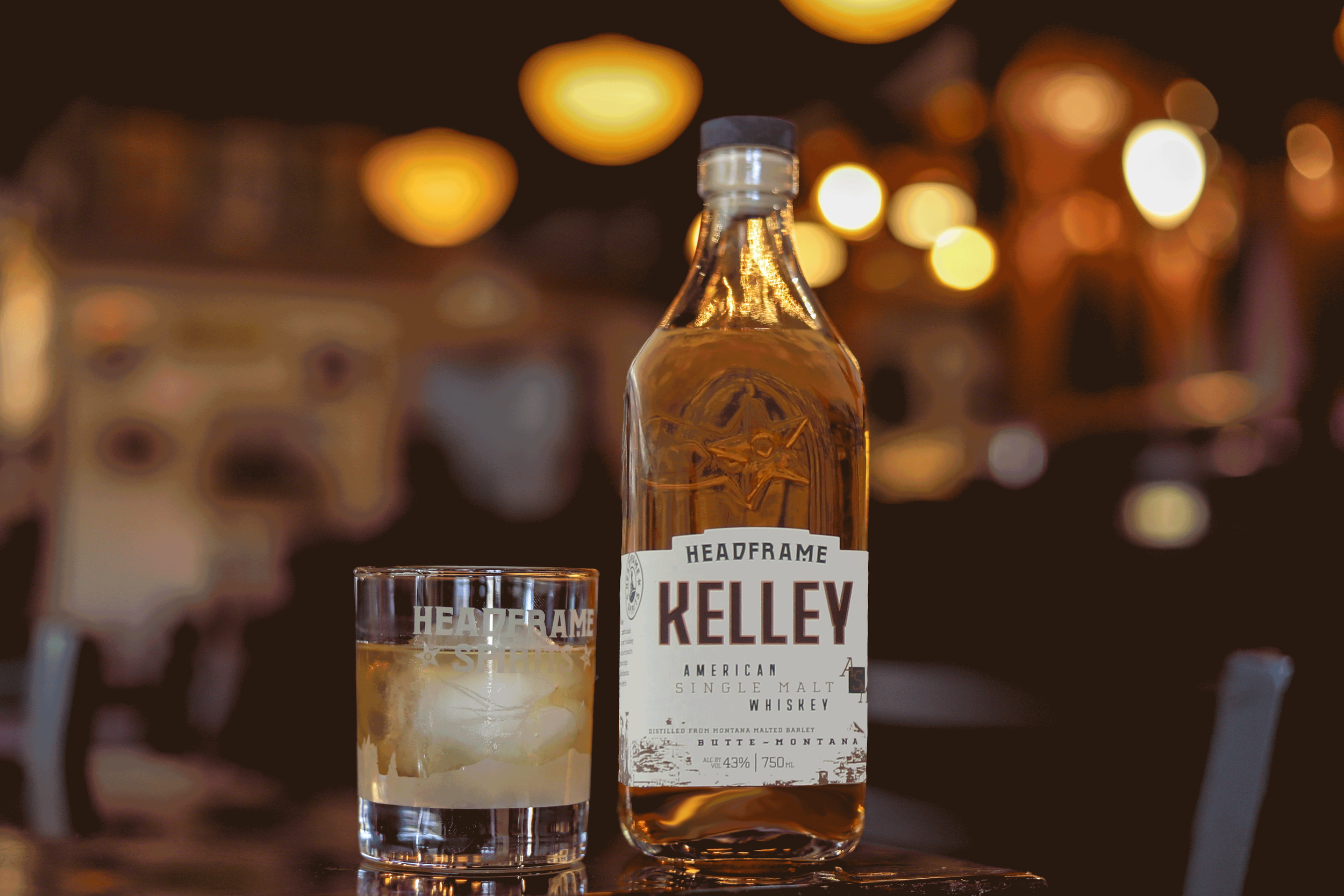American Single Malts: Headframe Spirits
Editor’s note: Alcohol Professor continues its American Single Malts series, following profiles of Westland Distillery, Virginia Distillery Company, Balcones Distilling, Cedar Ridge Winery and Distillery, and Stranahan’s with Montana’s Headframe Spirits. Read more: Why is American Single Malt Becoming the Newest United States Official Whiskey Designation?
Headframe Spirits Tasting Room
A recurring theme among distilleries that make single malt whiskies in a country not yet widely known for them is a specific passion for single malt. A founding member of the American Single Malt Whiskey Commission, Headframe Spirits’ founder and head distiller, John McKee, along with his wife Courtney, was always in it for the single malt. The first legal distillery based in Butte, Montana, “We opened this distillery to make an American single malt,” says McKee. “That was almost 12 years ago — the very first thing that we ever made, the very first barrel that we ever laid down was a single malt.” The distillery now makes several spirits, including vodka, gin, and various whiskey expressions, but here we get to know the Headframe story, and the impulse behind its single malt expression: Kelley.
Headframe: An American Story
All Headframe Spirits
Another theme that unites the American distilleries that make single malt whiskies are the distinctly American stories of how they began doing so. For McKee, an engineer working in biodiesel, single malt whiskey was a natural fit between his knowledge and his passion. “I’d invented a way to distill biodiesel 25 years ago,” he says, “and decided to come over to hooch.” The impetus for making a single malt specifically was to recreate elements of a whiskey he loved at the time, a 12-year Irish single malt called Knappogue Castle. “When my wife and I decided to make a play at this, we took a bottle of Knappogue out to Michigan State University, to their craft spirits group, to reverse engineer what I liked about it.” From there a recipe for their own single malt expression was developed and tweaked.
Having lived all over the world, the other element up for consideration for McKee was where to start a distillery. “Montana is the largest malt growing and malt producing region in the U.S.,” he says. “The largest malt house in America is three hours away from here, so we thought, why ship it to Kentucky? Why ship it at all? Why don’t we just stay here and make the malt right here, and that became the focus of what we do and why we do it.” The name Headframe, then, is a tribute to where McKee decided to stay, named for the above-ground iron structures that were part of the mine elevators significant to Montana’s history.
Montana Terroir: Grain, Water, and Weather
John McKee
In addition to its hyper local malt (and its history of mining other valuable resources), McKee was also attracted to Montana because of its water quality. “Where I’m sitting right now is at about 5000 feet,” says McKee. “And about a mile and a half away is the Continental Divide at about 8000 feet, so there’s no place here where water hits the earth any higher on the ground. We don’t have to have our water filtered through limestone to get a purity that is appropriate. I mean, the water is as clean as it gets. It just fell out of the sky.”
As is the case with every distillery we’ve profiled so far, McKee also eschews temperature-controlled aging facilities, letting the weather conditions have a distinct imprint on the whiskey as well. Both its elevation and Montana’s wild temperature swings play a part in influencing how the whiskey interacts with its barrels. (Stranahan’s, Cedar Ridge, and Headframe can perhaps all duke it out for whose weather is the wildest.) “It went down to 45 below zero this winter,” says McKee, of the warehouse where he stores upwards of 2000 barrels at a time. “And in the summer, we’ll get up to 102. I let it rock.”
Montana Single Malt: Headframe Spirits Kelley
Kelley on the bar
As a founding member of the American Single Malt Whiskey Commission, one of the elements that McKee and colleagues advocated for was permissive guidelines when it came to barrel aging, to allow for nuance within the category, and various signatures of different distillers. (This is a marked departure from Bourbon, America’s most famous whiskey, which must always be aged in new cooperage with certain char requirements.)
Utilizing its 100% malted Montana barley, and the mountain water, the finish is also what gives Kelley its personality. “I’m usually about 70% used (Bourbon) cooperage and 30% new cooperage” says McKee, who then puts it into sherry butts for another 60 days before release. The freedom of the American Single Malt Whiskey category means that distillers like McKee can also use other resources at their disposal without crossing the line of labeling as American Single Malt. McKee has experimented not only with used whiskey and sherry barrels, but with those having been used to condition everything from orange wine to stout beer. “With the product I’m trying to make I think of it as a painting, and if it’s missing some hues, I can go to these other barrels and I can grab a little bit to get that flavor back the way I want.” The sherry element introduces a bit of nuttiness into the flavor profile of Kelley, which is also described as having essences of spice and pear.
While the distillery name, Headframe, is inspired by the greater Montana mining industry, each of McKee’s spirits is named for a particular mine in the Butte area. In the case of his American Single Malt expression, Kelley, the name also has double-meaning. First, it’s the name of the specific mine where the yard became the site for the distillery. As single malt was the reason for the operation, it serves to name the first spirit coming from Headframe after its particular location. Second, it nods to the spirit’s Irish influence. “There were a lot of ethnic neighborhoods (during Montana’s mining heyday)” says McKee. “Right out our back door here was the Irish neighborhood called Dublin Gulch, and this is the Kelley mine. “Our single malt is very much Irish-influenced, as it’s not peated, so everything sort of tied together.”




